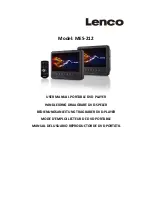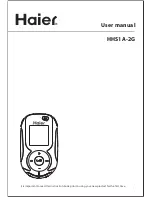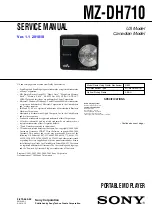
4
1. Basic information about the CD3NG
1.1 Mechanical construction
The case is fully made of steel. This material acts as a shield and protects drive and circuitry against
interferences from external magnetical and electrical fields. The audio-connectors are all gold plated to
minimize electrical losses and provide long lasting perfect contacts.
1.2 Power supply
A toroidal transformer together with 10.000µF of capacitance supplies the power for the CD3NG's circuitry.
All voltages are well regulated to avoid hum and are additionally buffered by large capacitors directly in the
circuitry where they are needed.
1.3 The drive
The disc is read by a drive especially made for CD. It can theoretically read CDs at 2 times the normal
speed. Thus the positioning of the laser pickup and the focus regulation can act very quick. So the drive
never comes to it’s limits when reading audio CDs at normal speed. Besides normal audio compact discs the
drive can also read CDROMs and some CDRWs.
1.4 Digital- / analogue conversion
The CD3NG is equipped with upsampling circuitry and highly precise a/d converters. The theory of function
will be described in the following text. If You are not interested in technical details, skip these chapters and
simply listen to the music coming from the CD3NG. You will discover Your CD collection anew! And that is
what we want to achieve. Because application of new technologies is not just a gimmick but offers audible
and measurable advantages to the listener.
1.4.1 Quantization noise
The quantity of information on a CD is defined by the audio format of 44,1 kHz sampling rate and 16 bits of
resolution. Additional informations (i.e. higher resolution or bandwith) cannot be created by any electronic
circuitry playing back such a CD. It is a fact that conventional d-/a converter systems do not fully reproduce
the given information. This has several reasons: Converting a digital signal to an analogue signal produces
analogue noise. This is because the digital (quantized) values which represent the signal are discrete with a
very fine – but nevertheless limited - resolution. Therefore exist slight deviations in respect to the analogue
original signal which was continuous (means infinite resolution). These deviations are random and cause an
additional noise to the original signal when it is converted from the digital domain to the analogue domain.
This kind of noise is called quantization noise.
The characteristic of this noise is that it has an energy which depends on the resolution used to quantize the
original signal and which is continuously spread over the whole range of the sampling frequency bandwidth.
It is obvious that this noise can mask fine details of the originally recorded music.
For physical reasons it is not possible to avoid quantization noise. Also a reduction of the total noise energy
is not possible because the noise has been created when the signal was recorded. An elegant solution of
this problem is to increase sampling frequency when re-converting the signal from digital to analogue. The
upsampling converter installed in the CD3NG can increase sampling frequency from 44,1 kHz up to 192 kHz.
When re-converting the upsampled signal the upsampling converter produces the same amount of noise
energy as a conventional converter.




























